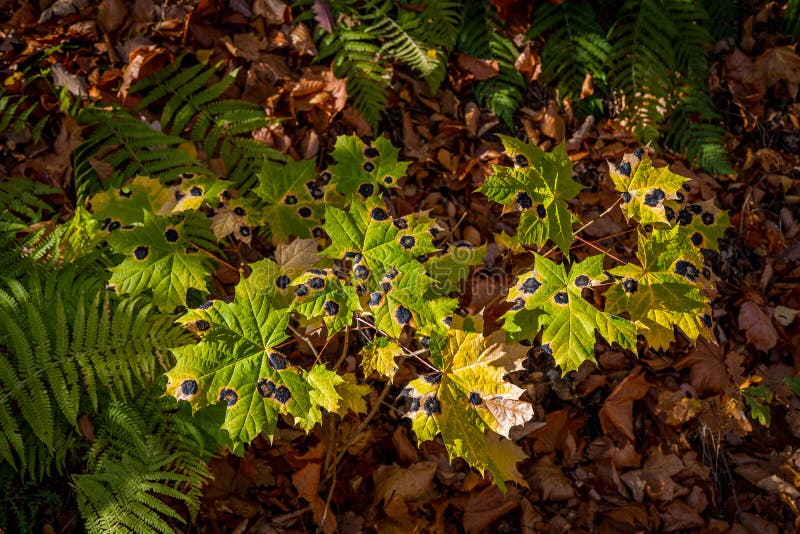Fig Tree Leaves with Black Spots: Causes & Treatment
Fig Tree Leaves with Black Spots: Causes & Treatment
Fig trees, celebrated for their luscious fruit and ornamental splendor, often encounter a range of maladies that can impair their growth and health. One of the most common aberrations reported by gardeners and horticulturists alike is the emergence of black spots on the leaves of fig trees. Understanding the causative agents behind these unsightly blemishes is paramount in conducting effective treatments. This article delves into the causes, effects, and management strategies for fig tree leaves with black spots.
The Causes of Black Spots on Fig Tree Leaves
Several factors contribute to the development of black spots on fig tree leaves. Primarily, these spots can be indicative of fungal infections. The most common culprits include Ascochyta and Botrytis species. These fungi thrive in humid conditions and can cause significant damage if left unchecked. The initial symptoms typically present as small, dark dots that expand over time, leading to larger lesions that can ultimately result in leaf drop.
Another prominent cause of black spots is the presence of Necrosphaera, a fungus that targets the leaf’s chlorophyll-producing tissues. This not only affects the aesthetic appeal of the plant but also hampers its ability to photosynthesize efficiently, leading to stunted growth.
Additionally, environmental factors such as excessive moisture, poor air circulation, and prolonged wetness after rainfall can exacerbate the contagion. Susceptibility increases in poorly drained soils, where water commonly pools around the root system. This creates an inviting environment for fungi to flourish.
Pest infestations also play a critical role in the degradation of leaf health. Aphids, spider mites, and whiteflies can damage foliage by sucking sap and introducing pathogens that foster black spot development. In some cases, insect excretions can serve as a breeding ground for fungus, further complicating the situation.
The Impact of Black Spots on Ficus Carica
Beyond the unsightly appearance, black spots can have far-reaching implications for the overall vitality of the fig tree. The presence of these dark blemishes often signifies underlying stress, which may lead to diminished fruit yield and quality. In severe cases, untreated fungal infections can lead to the demise of the tree.
The physiological impact on a fig tree with black spot-infested leaves includes reduced photosynthetic efficiency due to impaired leaf function. This can ultimately induce a cascading effect on nutrient distribution, negatively influencing the production and maturation of figs. Given that many gardeners cultivate fig trees for their fruit, understanding these impacts is crucial for proper management.
Identification and Management of Black Spots
Effective management of black spots warrants a multi-pronged approach. First and foremost, proper identification of the underlying cause is critical. Consultation with local extension services or agricultural experts can aid in diagnosing specific fungal infections or pest-related issues.
Once identified, preventative measures play a fundamental role. Cultivating disease-resistant fig varieties can significantly diminish the likelihood of fungal development. Maintaining optimal irrigation practices is equally vital. Ensure the soil has excellent drainage and avoid overhead watering, which can create a humid leaf environment conducive to fungal growth.
In cases where treatment is necessary, fungicides can be an effective remedy. Opt for systemic fungicides that penetrate plant tissues and deliver targeted action against pathogenic fungi. Always follow label instructions and safety precautions when applying these chemicals.
Insect control methods should also be employed in conjunction with fungicide treatments. Organic insecticidal soaps and neem oil are commendable options for managing pest populations, thus helping minimize black spot outbreaks.
Lastly, fostering a diverse ecosystem through companion planting can enhance the resilience of fig trees against pests and diseases. Surrounding fig trees with beneficial plants not only fortifies nutrient availability but also attracts natural predators of harmful pests.
Conclusion
In summary, black spots on fig tree leaves can be attributed to various factors, including fungal infections and pest infestations, each contributing to the decline of an otherwise thriving plant. Employing proper identification, preventative care, and timely interventions are vital in preserving the health of fig trees and ensuring bountiful harvests. By remaining vigilant and proactive, even the most afflicted fig trees can be restored to their former glory.
You May Also Like
Best Fish to Catch in Australia: A Guide for Anglers
Australia boasts an extraordinary diversity of fish species, making it …
Emily Bay Norfolk Island: A Hidden Gem in the Pacific
Emily Bay, a picturesque enclave nestled on the sun-kissed shores of …
Holidays on August 23: Global Festivities & Observances
August 23 is a date that carries a bouquet of cultural significance …





